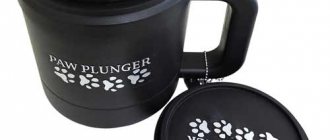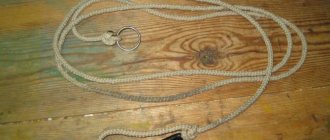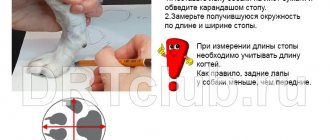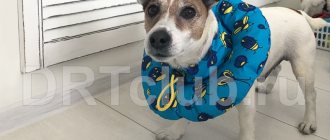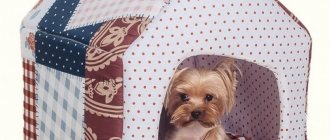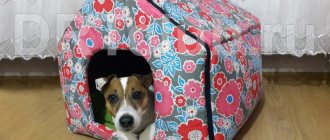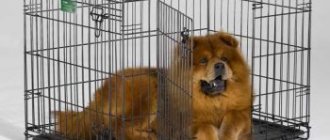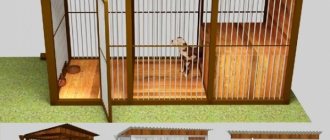Sled dog racing is still considered a popular sport throughout the world. But few people know why there was a need to use sled dogs even before the advent of competitions. This article describes in detail what a dog sled is called, where dog racing originated and what rules exist for this.
Sled race
Dog sled - history
The idea of sled dog racing originated in North America. In the late 19th century, gold rushes hit the states of Alaska and Yukon, and prospectors needed to quickly transport provisions to distant places. The delivery was carried out by mushers (mushers) and dogs. The animals were harnessed to special sledges, but not all breeds could withstand such a heavy load.
Another impetus was the diphtheria epidemic in 1925 in the city of Nome (Alaska). They began to deliver the vaccine to the city with the help of dogs - it was a fairly fast form of transport. The first two professional racers to start riding dogs were Leonard Seppala and Gunnar Kaasen. Seppala left the city with a team of Chukchi dogs, the leader of which was Togo. On the way back, they were replaced by Kaasen with the leader of the team, Balto, who turned out to be the fastest of all the dogs.
Since then, dog sledding has been a world-famous sport.
In the 20th century, competitions were even part of the Olympic Games. Additional Information. Now races are held not only in North America, but also in Europe (Italy, Switzerland, Austria), and in the north of Russia.
Using dogs for transportation
Universal riding. A brief excursion into the history of dog drafting
The work of Kamchatka artist Vadim Sanakoev.
What are "sled dogs"? In Soviet times, classification was based on subject usefulness. Therefore, huskies were “hunting”, “riding”, “reindeer herding”. It was believed that narrow specialization was the main thing. But this still does not correspond to the facts, taken impartially. Classification of huskies is a separate topic. Here we will talk about the dogs of the peoples of northern Eurasia, which, by the will of fate and people, were used primarily as sled dogs. After all, you can harness a poodle, and this is not a joke. This happens even at races in Europe and America. Or Nenets Laikas: they were both hunting and deer experts, and they were also quite good sledding dogs. But they gained official fame as reindeer herders. And the polar explorer Ushakov on Severnaya Zemlya had taiga (“hunting”) Nanai huskies as sleds.
The first transport in history
In primitive times, dogs of different sizes were domesticated in different regions of Eurasia.
But the general trend is this: in Europe - smaller ones, up to the size of modern Spitz dogs; in northern Asia - large, wolf-like dogs. Why is that? The appearance of large dogs was obviously associated with the need for long journeys. It was the Asian primitive man who passed through the Bering Strait to America. Here the first draft force in history was needed to pull a drag, just a skin on which belongings were loaded. This is the prototype. However, in 1989, a primitive site was discovered on Zhokhov Island (New Siberian Islands). This is 8-9 thousand years ago. Parts of dog sleds were found at the site, which means that already at that time huskies were used not only for hunting, but also as sled dogs. As for the genome, it is related to aboriginal dogs of both Chukotka and North America. One thing is obvious: the dogs of the coastal inhabitants of Chukotka, Kamchatka, and North America come from the same region - northern Siberia. From there, they, together with people, spread east to the vast territory of the Old and New Worlds. Genetic studies have made it possible to establish differences between this group and other breeds: a metabolism adapted to fatty foods, increased permeability of blood vessels (more oxygen is needed) and features of calcium consumption, which is important for muscle function in extreme conditions. All this is the legacy of Siberian Pleistocene wolves. The crossbreeding of dogs already owned by people with local wolves continued for a long time, but then stopped. It can be assumed that at first human travelers mated with wild animals in order to “get” the unique local gene pool, since initially they had dogs that were smaller and less cold-resistant. When new traits were firmly established in the population, why take the risk? Metis is a lottery. Sometimes the offspring are friendly, sometimes they are aggressive. It is better not to build this practice into a system unnecessarily. However, echoes of ancient behavior are in rumors that in the twentieth century. Such matings were rarely practiced in Chukotka and Kamchatka. It is difficult to say whether Jack London is being reliable when he talks about this in his books. But this clearly did not occur on a large scale in the New World. One way or another, the genome of modern Chukchi and Kamchatka barks differs from the modern polar wolf and is close to the ancient one - the same age as mammoths.
Among the northern peoples
Sled dogs allowed primitive man to travel through Siberia and the Far East along the frozen Bering Strait to the New World and explore vast spaces.
Many centuries later, dogs of essentially the same type completed this “quest”, becoming assistants to high latitude explorers. What's in between? A city person, when he first saw a team running across the tundra and a musher in a reindeer jacket, was fascinated by its ethnographic flair and often believed: “This is how these peoples lived before the advent of civilization.” However, the local economy acquired this form just with the advent of the Russian Empire and its officials. Before this, everything looked different. After the lands of Northeast Asia were developed, the Holocene era began. Constant migrations with the transportation of cargo over long distances ceased. Here fate came to the rescue, “liquidating” the huge herds of primitive animals, after which they wandered. Each tribe acquired its own relatively small lands, where neighbors were not really allowed. However, it’s mutual. This immediately affected external forms of management. What do we know about this more specifically? Itelmens
- a numerous people who lived along the coasts of Kamchatka rivers and seas, in a collision with colonists in the 17th-18th centuries. He suffered more not from wars and resistance to yasak collectors, but from diseases brought by aliens: the overcrowding of life let him down. Today there are few Itelmens left, but in those days it was sled dog breeding that made it possible to live crowdedly and comfortably. The first scientific descriptions of an economy of this kind are about this people. Traveling over long distances is rare; sleds are not so much for the load as for the rider. G.V. Steller noted: “If in earlier times they went further than hunting and obtaining food required, then this was done only to visit friends or in case of war” (Steller, 1999). This happened not only in Kamchatka, but also in Chukotka, and in other similar places. Archaic sledges are poorly suited for long journeys.
Types of sleds: a – Chukchi-Kamchatka type; b – ancient Itelmen. From “History and Culture of the Itelmens”, 1990.
Chukotka dog sled. Image from an ethnographic publication of the mid-19th century. From: Semenov-Tyan-Shansky, 2010.
With the taxation of yasak on the population, hunting for fur-bearing animals became mandatory and required an increase in travel. This was also facilitated by the “musher chase”—the trips of the authorities.
In the XVIII - first half of the XIX century. The Itelmens already used two types of sleds - sleds and cargo sleds.
The Russian state steadily expanded to the East, beyond Ural-Kamen and further to the Pacific Ocean. Dog transport - which is of little use in the northern regions - was appreciated and adopted. A type of sled also appeared, which was later borrowed by the northeastern peoples as more optimal: in Kamchatka and Chukotka they began to ride on load-carrying sleds that were convenient for long journeys, which were called “East Siberian”.
Koryak cargo sled (East Siberian type) at the Beringia-1990 races. Kamchatka, Esso. Photo from the author's archive.
The sled (East Siberian type) of the Chukchi Tynetegin and the sleigh of the American Kat Persons at the Nadezhda-1992 races.
Anadyr. Photo by the author. In 1499, an expedition to the Yugra country of the Russian army, which expanded the Novgorod possessions, was accompanied, according to Lerberg (Liverovsky, 1936), by hundreds of dog sleds (the Yugra land, where the nomadic Yugra people lived, existed in the 11th - 15th centuries on both sides of the Northern Urals ). The use of dogs' draft power was varied: they transported people and cargo not only on sledges, but also on carts, dragged caught sea animals, and "dug" on rivers. The first Cossack settlers in Kamchatka, in conditions of a shortage of horses, even harnessed dogs to plows.
And here is an example of the First Kamchatka Expedition of Vitus Bering (1725-1729). According to academician L.S. Berg (1946), the famous commander used Kamchadal dogs to transport goods over a distance of 900 km. Famous discoveries have been made, but everything has a price: Bering’s expedition became a disaster for the Kamchadals. Dogs were collected from all settlements, most of them died. The population was left without a single domestic animal for a long time and went bankrupt. People engaged in transporting goods missed the winter time for animal hunting. The collectors demanded yasak, no matter what. The exorbitant burden placed by Bering on the Kamchadals and their dogs became one of the reasons for the uprising of 1731.
In all our studies of the northern peoples, we must not forget: after they became part of the Russian Empire and became the subclass, their ethnographic way of life changed. Sled dog breeding of this time was the lot of sedentary residents of the coasts of the seas and large rivers. And restless migrations are associated more with pack reindeer (Evenks), with reindeer teams (Samoyeds) or with northern horses (Yakuts, Evens).
Let us dwell on the main ethno-economic centers of sled dog breeding and note: the owners of classic sleds are not taiga, not tundra, but coastal peoples. The appearance of their economy is determined not so much by ethnicity as by landscape features. Let's give a few examples.
Yukaghir dogs
Russian servicemen who came to the Yukaghirs back in the 17th century saw their huskies in sleds. Even the Indigirka River was often called “Dog” at that time. And in the 19th and early 20th centuries. The abundance of dog sleds in the “country of the Yukaghirs” amazed travelers.
The wandering tundra and taiga Yukaghirs used dogs for hunting, but the main animal was deer. There are no dog sleds.
At the same time, the Yukaghirs, residents of the banks of large rivers, are sedentary dog breeders. Laikas were widely used for the most important hunting in the spring for moose and wild deer, in winter for squirrel, ermine, arctic fox and fox, and in summer for moulting geese. They also caught a polar bear with huskies. There is a lot of prey, it is the basis of nutrition, there is something to carry. The Yukaghirs themselves depicted the work of their huskies quite clearly and comprehensively in painted letters on birch bark - tosa.
Scenes of fishing and hunting in summer. The Yukaghirs go out for spring hunting on the crust. Tosa. The end of the 19th century. From: Tugolukov, 1979 (borrowed from V.I. Yokhelson, 2005).
Laikas of settled Chukchi
An illustrative example is the Chukchi - people of the same nation, but living within different landscapes.
The sedentary Chukchee needs to carry fish in large quantities, go to the ice hole for seals and return back with heavy catch. In these conditions, a team is necessary, and other things being equal, qualities such as the relatively large size of the dog and draft power come first. But not only. Harnessing is not just about pulling. This is behavior in a pack and helping the owner in extreme situations, coordinated behavior when moving and in parking lots. The leader acquires enormous value. Not necessarily a leader. This is, in fact, a person’s “first deputy” in the complex matters of managing a flock.
Housing of a flock (team) of Chukchi huskies. Pos. Lorino. 1990. Photo by the author.
The tundra nomad - the reindeer Chukchi - when he switched to large-scale reindeer herding, he preferred small, mobile huskies. Here the Nenets imported guests were very welcome. They can handle large herds without being bitten.
In Koryakia the same pattern occurs. The sled dogs of the Nymylans are coastal, sedentary. Nymylans need to carry fish, brushwood, and go on visits. Here is the world of harness farming. Among the Chavchuvens, the reindeer Koryaks, sled dog breeding is not practiced.
Researcher N.V. Slyunin: “A sled dog that differs little from a wolf... and even passes for a tamed wolf.”
The same pattern is observed on the Amur and Sakhalin. Perhaps there is a greater bias towards taiga hunting.
Experimental control or exception to the rule?
When the authorities on Novaya Zemlya in the 19th century. They settled the Samoyeds; they had to lead a coastal life there, not a tundra one. I had to start a sled. Different dogs were delivered from Arkhangelsk. Those of them that adapted to the harshest conditions formed a particularly interesting population. This is where the method of harnessing dogs of the Novaya Zemlya type came from. Its difference is that the dogs are harnessed in a fan, and not in pairs in a line. In conditions where you don’t have to stick to a narrow path on rough terrain, this method is less energy-consuming. It’s fortunate that the gently sloping Novaya Zemlya tundra allowed such an innovation.
Postcard 1911
Great Post Road
In the middle of the nineteenth century. the development of the territories of Siberia and the Far East is becoming so intense that the need for mass transportation arises. Entire caravans of wagons travel thousands of kilometers. Huge masses of dogs are mobilized, capable of crossing the plains of Chukotka and the rugged Kamchatka Peninsula.
Everything would be fine, but this grandiose event mixed together unique breeds that had been created for centuries. Back in 1934, teams provided postal communications in Kamchatka between 100 villages, 3 collective farms and 30 state farms. On January 1, 1934, there were 50,000 sled dogs in the Kamchatka region.
Fortunately, there were pockets in private households that escaped participation in this great odyssey. The dogs of Chukotka have survived in their original form. Well, Kamchatka has retained the type of relatively long-legged dog, which will be recognized as the best in this nomination.
“A good team could cover a distance of up to 100 kilometers or more in a day, on a good road,” wrote Kamchatka local historian M.G. Soft.
Among the newcomer population of Petropavlovsk-Kamchatsky and nearby villages, a cohort of amateur enthusiasts appears who are engaged in breeding work and organize races. There were several types of richly decorated passenger tents, including covered ones. They were lined with bearskin and decorated with gold embroidery. After the revolution, such activities ceased as a “relic of the nobility.”
THE USSR. The brilliance and poverty of the teams
The Soviet government appreciated the old developments. True, here again we were not talking about the restoration of rocks, but all about the same applied melting. But the tests were carried out on a grand scale:
“The center is conducting an interesting experiment in testing the riding qualities of the Kamchatka dog. The transition began from Sverdlovsk along the route Sverdlovsk - Sarapul - Kazan - Nizhny Novgorod - Moscow. 11 Kamchatka dogs and one Ural dog took part in the race... musher driver Ivan Mikhailovich Dyachkov... made 2000 kilometers when he had to deliver gasoline to inaccessible areas of the North... for pilots... looking for the American aviator Eielson,” (“Kamchatskaya Pravda”, No. 34, 1931 ).
During the era of conquest of high latitudes, huskies were widely used in polar expeditions, but this topic requires a separate discussion...
However, already in the thirties, the researcher of the Far East N. Bilibin noted the decline of dog breeding, the reduction and degeneration of the livestock.
As the technical equipment of the “northers” improves, the dog as a means of transport loses its importance. Not only is it considered unprofitable to keep a team on a private farm (taxation, fishing ban), but Kamchatka residents also remember departmental shootings of livestock. And before the war, at times they shot not local dogs, but imported ones, so as not to spoil the “breeding material.” These were the simple methods of both selection and anti-selection in that era.
***
This article briefly shows the history of the riding business. However, as for modern times, despite a lot of promotional events, races and seemingly increased attention to the problem, the issue of breeding work with the surviving ancestral livestock remains unresolved. And in all regions of our North.
Author:
Oleg Shiroky, zoologist.
Sources
BERG L. S. Discovery of Kamchatka and Bering's expedition. - M.; L., 1946.
HISTORY AND CULTURE OF THE ITELMENS. Historical and ethnographic essays. - L.: Nauka, 1990. - 208 p.
LIVEROVSKY Yu. A. Kamchatka dogs. — In the collection: On Kamchatka. - M.-L., 1936.
SEMENOV-TIAN-SHANSKY P. P. Travel to the Tien Shan. - M.: Eksmo, 2010. - 480 p.
STELLER G.V. Description of the land of Kamchatka. - Petropavlovsk-Kamchatsky, Book publishing house “Kamchatsky Printing House”, 1999.
TUGOLUKOV V. A. Who are you, Yukaghirs? - M.: Nauka, 1979. - 152 p.
SHIROCY B., WIDE O. Our northern dogs: Introduction to husky breeding. — Publishing solutions, 2022. – 558 p.
Race disciplines and classes
Competitions are divided into disciplines, classes and categories. There are winter and summer disciplines.
Winter:
- sleds;
- skipulling – 1-4 dogs harnessed to a small sleigh;
- skijoring - ski races using 1-2 dogs.
Summer (dryland):
- canicross - running between a person and a dog;
- scooter/scooter – the use of these types of transport by a person with a dog tied and running in front;
- dog-karting – an animal pulls a cart with a person or cargo;
- Bikejoring is the riding of a person on a bicycle with a dog tied and running in front.
The race class is determined by the number of dogs participating:
- not limited – any number of dogs;
- limited – a certain number of animals;
- sprint – a short distance race with 4, 6 or 8 dogs;
- for juniors – participants (people) must be no more than 18 years old;
- remote – medium distance – up to 500 km, long distance – from 500 km;
- with weights - transportation of cargo in a sleigh;
- relay race - several teams participate in it;
- orienteering - a race in unfamiliar territory using a map or compass;
- foot race - a person is attached to a dog and runs after it on foot;
- multi-day race - participants cover certain distances over several days.
There are only 4 speed categories:
- the first – teams of dogs of northern breeds with pedigrees;
- the second – dogs of northern breeds with pedigrees (without huskies);
- third – any breeds with pedigrees;
- the fourth is a team in which there is at least 1 dog without pedigree or mixed breed.
Summer racing
Competition rules
Professional dog riding has its own rules and requirements:
- the air temperature must be acceptable for running;
- the length of the route must correspond to the competition class and be at least 25 km;
- a rider is allowed to participate in all types of racing only from the age of 16; from 12 years old, you can only participate in the sprint with 2 dogs;
- the age of the animals must not be less than 15 months for sprint, canicross and 18 months for other racing classes;
- pets must be healthy, microchipped or branded and have veterinary documents - the condition of the animals is checked before the competition;
- Pregnant, estrus or lactating dogs are not allowed to participate in the race;
- equipment is inspected before the race.
Note! Dogs without a pedigree cannot receive a working title after competitions.
How to start training
Systematic and regular training is the key to success. And racing with sled dogs was no exception. Great attention should be paid to the coordinated work of the dog and the driver. And the balanced and nutritious diet of the dog, as well as the process of bringing it into optimal physical shape.
The main part of the competition takes place in the cold season. But athletes carry out intensive training all year round, with the exception of the hot period. All preparation can be divided into 3 key periods:
- Leisure. Lasts from May to August. This is the ideal period for your pet to rest. Swimming, long walks and moderate exercise help maintain the dog’s tone;
- Workout. September - January. During this period, the skills and exercises necessary to participate in the race are developed;
- Performances. The organizers choose the period from January to March-April for them. At this stage, participants must show their achievements and demonstrate their acquired skills to the maximum extent possible.
- The preparation of equipment deserves special attention. For the dog, you should individually make ammunition, and also train the animals to work with a certain type of equipment. This will make it easier to complete the distance.
You may also be interested in our article: Training and training of hunting dogs
The training program is developed by the musher or his trainer. All data on weather and loads are recorded, and the likelihood of injury to competition participants is assessed. The animals and the musher must be in perfect shape before the start of the competition and the dogs must unquestioningly obey all commands.
This is important: you can start training in any region. It is enough to contact the kennel club and experienced breeders will tell you how and where to start the training process.
Equipment
To participate in competitions, only equipment that is comfortable and suitable for the animal is allowed. Collars, harnesses and cables should be made of lightweight but durable materials. The harness ensures uniform distribution of the load on the dog's spine during sudden jerks and running. It should be the right size for the dog.
The tug (as a cable with a shock absorber is usually called) connects the dog’s harness with the rider, protects the dog’s spine during sudden movements and heavy loads. To use it, the size of the pet and its physical fitness are also taken into account.
Required equipment
Breeds of dogs for sled sport
The rules of most competitions allow dogs of any breed to participate in sledding competitions. However, it is obvious that not every animal is suitable for such competitions due to the specific requirements that the very nature of racing imposes on its body:
- high endurance, especially at medium and long distances;
- high traction force, allowing you to move loads of various sizes;
- high speed of movement, including on loose soil or snow;
- frost resistance for participation in winter disciplines;
- calm character and non-conflict to ensure coordinated work of the team;
- clear and unquestioning obedience to the musher.
In accordance with the above requirements, the most suitable are considered northern breeds, characterized by dense bones and well-developed muscles - malamutes, Siberian huskies, Greenland dogs , etc. At the same time, to increase speed, many racers began to use animals mixed with the blood of shorthaired pointers, greyhounds , pointers and other gundog or hound varieties.
- OO training
Campbell's personality test
- 11.01.2019
Where to start training
The preparation of dogs for racing begins at about 6 months, when their skeleton is strong and formed. How long does the training last? Sled dogs acquire all the necessary skills by the age of one year, while other breeds require a little more time. You should not prepare decorative, small or show dogs for competitions.
Note! Harnesses are not recommended for pets under 6 months of age, as they have a detrimental effect on the developing skeleton. As the animal ages, the harness should also change.
At first, the dogs are trained individually. Dogs must initially be hardy and obedient. Before training for racing, animals should undergo a training course in special schools.
Method 1 of 4: Equipment
You need to carefully select dog harnesses. You will need a harness, a cable with a shock absorber, and a skijoring belt. In winter you will need sleds to ride in the snow (sled), and in summer you will need a kart (cart) or, for example, a bicycle. The mileage and time counter will also come in handy.
Method 2 of 4: Weight
First, the pet should get used to the harness, and only then you can attach a small weight to the leash. At first it will bother the dog, but then he will get used to moving it. The load should become heavier - you need to act gradually.
On a note! The maximum load that one dog can carry is 50 kg.
Method 3 of 4: Alternative Method
You can hook one leash to the harness and the other to the collar. Leashes must be the same length. When walking your dog, the leash should always be taut and in a horizontal position. With the help of a collar, you need to remind the animal that it must go ahead.
Method 4 of 4: Harness your dog to a sled or scooter
Harnessed dogs may not immediately get used to such a load. You need to give them something to chase. You need to keep them on the same line and not let them run out. The trainer or owner must always keep his foot on the brake. You can create obstacles - sculpt, for example, snowmen.
Important! During the summer, you should not forget to water your dogs often to avoid dehydration.
Sled dog breed – Malamute
How to put on a harness and make a dog sled
At the Mäkiaho dog breeder's farm in Yams, you will have the opportunity to harness the dogs yourself to the sled that you will lead. Each sled dog has its own individual harness, depending on the size and weight of the dog. Dog breeder Mäkiaho has harnesses of different sizes marked with different colors. (Photo No. 1.)
To put a harness on a dog, you need to “straddle” it, holding the dog’s waist with your knees. This way, even a very temperamental dog will be under your control, and you will have your hands free to handle the harness. (Photo No. 2.)
With your left hand, take the harness by the crosshairs of the neck straps, and with your right hand, by the rope loop of the harness, to which the traction line carabiner will be attached. Determine the lower chest part of the harness, which should be located between the dog's front legs. (Photo No. 3.) Place the harness on the dog's head so that the chest strap is located between the dog's legs, and the rope leash attached to the back straps is in the center of the back towards the dog's tail. Place your front paws through the harness and straighten the straps across your back and sides. After this, check again how the harness fits. (Photo No. 4.)
Terminology
Sled sports use certain terminology. Here are the basic concepts:
- A race is a type of competition in a specified discipline and class.
- Race – a one-time passage of the distance.
- Sled is the name of dogs that are harnessed to a sleigh, scooter, bicycle, etc.
- The competition area is the place where the start, finish, parking, spectator and judge areas, and the track are located.
- Equipment – clothing, equipment and ammunition used during competitions.
- The driver is the person driving the team.
- The handler is the driver’s assistant at certain points of the race.
- Steak-out is a place where pets are kept;
- A musher is a person who drives a team during a race.
DIY dog tracks
If the owner decides to sew a harness for the dog himself, then you need to carefully measure the dog’s chest circumference, neck circumference and chest length (you need to apply a measuring tape from the center of the neck to the center between the front paws). You can use non-rigid leather belts with a width of at least 4 cm. The following measurements should be obtained: chest circumference + 10 cm for fastening, neck circumference + 10 cm and chest length + 12 cm. Carabiners are used to fasten the elements.
Measuring circuit
On a note! The pull can be made from a leather bandage or thick rope. The length of the belt depends on the number of dogs.
Dog sled racing is quite an exciting and spectacular competition. Every rider should not forget about caring for their pets and choosing the right equipment for them. The musher must also have athletic physical abilities to control such strong and fast animals.
Equipment for dog sledding
You don't need any special gear or equipment to ride dogs. But, of course, you should dress warmly: Don’t forget to wear warm shoes, a jacket, a hat and mittens, and safety glasses won’t hurt either! Remember that dogs develop great speed and in the wind the frost seems even stronger. You may fall into a snowdrift, your boots may get snowy, and if the sled overturns, you may have to walk back to the dog farm, so dress for winter!
leave us your request.
Published: Sunday, 06 October 2013 11:02 Last Updated on Tuesday, 02 December 2014 21:00
Was this information useful to you? Share!

